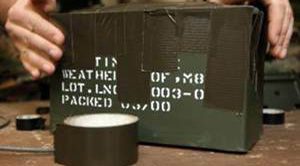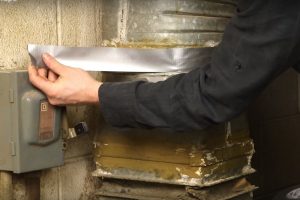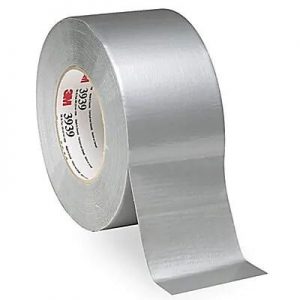From Duck to Duct – Lessons from past crises

Like all mothers in World War II, Vesta Stoudt worried about the safety of her children. She had two sons in the US Navy
Unlike other mothers though, she had a very particular concern based on her experience working in an ordnance factory. She was concerned that the seals on ammunition boxes were difficult to open and could lose soldiers, and her sons, vital seconds in the heat of battle.

She worried away at it and came up with an idea which she then had tested at the factory. It seemed to work well, so she wrote a letter to President Franklin D. Roosevelt and suggested that the boxes were sealed with a waterproof fabric tape.
The letter was forwarded to the War Production Board who immediately saw the potential benefits and asked Johnson & Johnson to see what they could do. Since 1927, the Revolite division of Johnson & Johnson had made medical adhesive tapes from duck cloth and a team headed by Revolite’s Johnny Denoye and Johnson & Johnson’s Bill Gross built on this existing product and developed a new adhesive tape which could be ripped by hand, and didn’t need to be cut with scissors. It came in one colour : army green.
Their new product was made of thin cotton duck, coated in waterproof polyethylene with a layer of rubber-based adhesive bonded to one side.

It became known as ‘Duck’ tape though whether this was because it was made with cotton duck or because it was green and water resistant like a duck’s back no-one knows.
Sailors, soldiers and airmen soon released that it wasn’t just good for sealing and waterproofing ammunition casings but could be used in all sorts of other ways. They began using it for repairing their jeeps, guns, and aircraft. In some emergencies it was even used as a temporary means of closing wounds in field hospitals.
When the WWII ended and the soldiers came home, they brought “Duck” tape back with them, using for a variety of jobs.

The immediate post-war period saw a housing market boom and another use was identified. Builders and handy men started using it as a means to connect heating and air conditioning ducts and building merchants started stocking it. It was used it in many of the new homes that were being built. However a choice that had been “any colour you like as long as it’s army green” wasn’t really going to work with ducts which were mainly silver and the tape’s primary colour quickly became silver, so that it would match the ducts.

This colour change also prompted a change of name and ‘Duck’ tape became ‘Duct’ tape.
It continues to be a sample for builders and handy-men as summed up in a quote from G. Weilarcher “One only needs two tools in life: WD-40 to make things go, and duct tape to make them stop.”
What are the implications, if any for brands?
In a world (in a recession) where things will change are there new uses for your existing products?
And what if any adaptations could you consider to make them fit for their new purpose?
Footnote: Duct tape was famously used to create a fix for the failing Apollo 13’s carbon dioxide filters. Ed Smylie, who designed the scrubber modification, said later that he knew the problem was solvable when it was confirmed that duct tape was on board: “I felt like we were home free. One thing a Southern boy will never say is, ‘I don’t think duct tape will fix it.’”